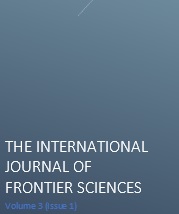Frequency of Predisposing Factor of Nausea and Vomiting after Chest Surgery under General Anaesthesia
DOI:
https://doi.org/10.37978/tijfs.v3i1.48Keywords:
Postoperative, AnesthesiaAbstract
Background: Postoperative nausea and vomiting are common and distressing postsurgical symptoms. These symptoms are of particular concern in outpatient surgery because they may require additional direct resources, such as supplies and antiemetic drugs, and may delay discharge. The objective of this study was to measure the frequency of factors which can cause nausea and vomiting under general anaesthesia after chest surgery.
Methodology: This descriptive case series evaluated frequency of predisposing factor of nausea and vomiting in patients of anaesthesia department of Gulab Devi Hospital Lahore. Questionnaire is made and patients were asked about their age, fever, previous surgery, NPO status, smoking history and hospital stay. This study included 140 patients with post-operative nausea and vomiting.
Results: In this study, 140 patients were taken in which 65 (46.43%) were female and 75 (53.57%) were male. In 140 patient 134 (95.7%) were NPO and 6 (4.3%) were not NPO, 25 (17.9%) were obese and 115 (82.1%) were not obese, 88 (62.9%) patients were suffering fever and 52 (37.1%) were not suffering fever, 80 (57.1%) were infected and 59 (42.1%) were not infected, 53 (37.9%) patients had previous surgery and 87 (62.1%) had no previous surgery, 94 (67.1%) patients had received nitrous oxide and 46 (32.9%) didn’t, 97 (69.3%) received volatile gases and 43 (30.7%) not received, 29 (20.7%) received ketamine and 111 (79.3%) not received, 87 (62.1%) received suxamethonium and 53 (37.9%) not received, 119 (85.0%) received propofol and 21 (15.0%) not received, 110 (78.6%) received naluphine and 28 (20.0%) not received. Out of 140 patients, there were 122 (87.1%) who were suffering from pain and 18 (12.9%) were not. 91 (65.0%) patients had gastric distention and 49 (35.0%) patients didn’t. Opioids were given to 34 (24.3%) patients and not given to 106 (75.7%) patient.
Conclusion: It is concluded that the nausea and vomiting after surgey under genral anesthesia is due to patient related factors in which most frequent is NPO. Drug related factors include propofol and nalbupin administration. Post operative factors include pain. In whole study of 140 patients, the most frequent is patient related factor (NPO) other than drug related factors and post-operative factors.
References
Thompson HJ. The management of postoperative nausea and vomiting. Journal of advanced nursing. 1999;29(5):1130-6.
Andria ML, Arens J, Baker Jr D, Bolinger A, Briones G, Chen J, et al. ASHP therapeutic guidelines on the pharmacologic management of nausea and vomiting in adult and pediatric patients receiving chemotherapy or radiation therapy or undergoing surgery. American Journal of Health-System Pharmacy. 1999;56(8):729-64.
Kovac AL. Prevention and treatment of postoperative nausea and vomiting. Antiemetic Therapy: Karger Publishers; 2004. p. 121-60.
Camu F, Lauwers M, Verbessem D. Incidence and aetiology of postoperative nausea and vomiting. European journal of anaesthesiology Supplement. 1992;6:25-31.
Watcha MF, White PF. Postoperative nausea and vomiting. Its etiology, treatment, and prevention. Anesthesiology. 1992;77(1):162-84.
Chung F, Mezei G. Factors contributing to a prolonged stay after ambulatory surgery. Anesthesia & Analgesia. 1999;89(6):1352.
Palazzo M, Strunin L. Anaesthesia and emesis. I: Etiology. Canadian Anaesthetists’ Society Journal. 1984;31(2):178-87.
Macario A, Weinger M, Carney S, Kim A. Which clinical anesthesia outcomes are important to avoid? The perspective of patients. Anesthesia & Analgesia. 1999;89(3):652.
Gan TJ, Meyer T, Apfel CC, Chung F, Davis PJ, Eubanks S, et al. Consensus guidelines for managing postoperative nausea and vomiting. Anesthesia & Analgesia. 2003;97(1):62-71.
Gold BS, Kitz DS, Lecky JH, Neuhaus JM. Unanticipated admission to the hospital following ambulatory surgery. Jama. 1989;262(21):3008-10.
Apfel CC, Läärä E, Koivuranta M, Greim CA, Roewer N. A simplified risk score for predicting postoperative nausea and vomiting conclusions from cross-validations between two centers. The Journal of the American Society of Anesthesiologists. 1999;91(3):693-.
Apfel C, Kranke P, Eberhart L, Roos A, Roewer N. Comparison of predictive models for postoperative nausea and vomiting. British journal of anaesthesia. 2002;88(2):234-40.
Lerman J. Surgical and patient factors involved in postoperative nausea and vomiting. British Journal of Anaesthesia. 1992;69:24S-S.
GOLD MI. Postanaesthetic vomiting in the recovery room. British journal of anaesthesia. 1969;41(2):143-9.
Apfel C, Greim C, Haubitz I, Goepfert C, Usadel J, Sefrin P, et al. A risk score to predict the probability of postoperative vomiting in adults. Acta Anaesthesiologica Scandinavica. 1998;42(5):495-501.
Breitfeld C, Peters J, Vockel T, Lorenz C, Eikermann M. Emetic effects of morphine and piritramide. British Journal of Anaesthesia. 2003;91(2):218-23.
Barnes N, Bunce K, Naylor R, Rudd J. The actions of fentanyl to inhibit drug-induced emesis. Neuropharmacology. 1991;30(10):1073-83.
Avery G. Outsourcing public health laboratory services: A blueprint for determining whether to privatize and how. Public Administration Review. 2000;60(4):330-7.
Downloads
Published
Issue
Section
License
Copyright (c) 2019 The International Journal of Frontier Sciences

This work is licensed under a Creative Commons Attribution 4.0 International License.






